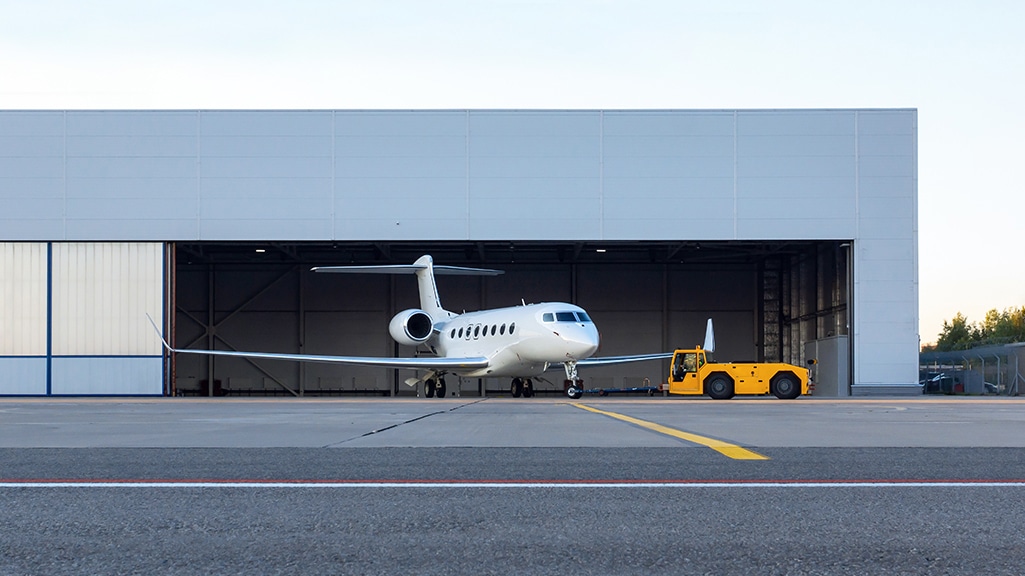In the field of aviation safety, much of the focus is on scenarios in which an aircraft is taking off, in flight or landing. Given the high risk of injuries and property damage in those situations, the emphasis on safety is undoubtedly warranted.
However, there are also countless risks to aircraft, equipment, structures, passengers, and personnel during ground handling. By most estimates, ramp accidents worldwide are responsible for billions of dollars of direct costs annually.

When you add expenses associated with aircraft being out of service, temporary replacement equipment, medical care for injuries, etc., the total increases significantly. Aviation organizations must also consider the unknowable cost of lost business opportunities.
The good news is that businesses can greatly reduce these financial impacts by taking steps to minimize ramp accidents.
The Irony of Increased Accidents Due to Increased Expertise
Needless to say, the risk of ramp accidents is highest for aviation entities that don’t take action to prevent them. However, organizations with excellent safety protocols aren’t immune from incidents.
In fact, achieving a high degree of proficiency in accident risk awareness and accident prevention can lead to another problem: complacency. It is human nature that people will begin to take a more relaxed approach to safety when they have completed actions like moving, parking, servicing, or fueling aircraft hundreds or thousands of times without incident.
Fortunately, there are actions aviation businesses can take to combat complacency.
Aviation Safety Starts With Self-Awareness
Even before considering best practices for ground handling operations, organizations should ensure that their team members understand the importance of self-assessment and self-awareness.
In the often-chaotic ramp environment, it is common for employees to feel compelled to coordinate or assist in activities for which they are unprepared. To prevent an employee from taking on tasks they shouldn’t, everyone should be taught to ask themselves important questions before diving in:
- Do I have the necessary training and knowledge to complete, direct or assist with this task?
- Do I have the correct equipment for completing the task?
- Is that equipment in proper working order?
- Can I perform the work alone, or do I need assistance from a properly trained coworker?
And perhaps most importantly: What are the consequences (to others and to me) of failing in this task? If the ramifications are understood, and the person is adequately trained, equipped, and assisted, if necessary, they should proceed. If not, they must not continue — regardless of any expressed or implied pressure to move forward and “hope for the best.”
Developing and Following Ramp Safety Best Practices
The aviation industry has many established best practices for ramp operations. For example:
- A ground marshaller should guide all aircraft movements to and from parking spots.
- Wing tips and tails should have warning cones if appropriate for the environment.
- Two employees, plus the tug driver, should handle all moves.
- Ground employees must confirm that the brakes are off before moving an aircraft.
- Rotate crews to ensure people don’t become too familiar with one another.
- Undertake regular training to maintain proficiency.
- Third parties (i.e. catering trucks, fueling trucks) must adhere to safety standards.
And the list goes on.
In addition to industry-standard best practices, there likely are others specific to the location, aircraft, ramp equipment, weather conditions, etc. Employees must also be well-versed in those requirements.
The Importance of Open, Honest Communication About Ramp Activities
Aviation professionals are team players by nature and also by necessity. Each wants to do all they can to ensure safe operations and make their teammate’s job easier. They also tend to be perfectionists who are proud of their skills and accomplishments.
As a result, they may be inclined toward an “I’ve got this” attitude, even when they haven’t been trained for the task. And that attitude can lead to costly incidents.
For that reason, ground crews and management should maintain open and honest communications. That includes being able to share concerns without fear of reprisal. It is much safer for everyone involved if someone asked to perform a task for which they are unqualified feels comfortable saying, “I’d like to help with that, but I don’t have the skills or experience to do it.”
Rather than being greeted with frustration, that type of statement should be viewed as an honest admission and one that immediately reduces the risk of a ramp accident. If possible, rather than sending that person off to perform a different task, they should be invited to observe so that they become more familiar with the operation. Observation should never be a substitute for training, of course, but it can provide valuable background before training or insight that reinforces completed training.
Eliminating “Inevitable” From the Aviation Vocabulary
Aviation organizations sometimes look at statistics the wrong way. They see information in a report (or in this article!) indicating that a certain number of ramp accidents occur annually and resign themselves to the fact that their team will be involved in an incident at some point. “It’s just a matter of time,” they conclude.
Of course, that type of thinking can lead to a downward spiral in the effectiveness of safety protocols. Instead, statistics on ramp accidents should motivate teams to strive for ever-better performance. As more teams take on that responsibility and challenge, the incident numbers will start falling across the industry.
Is it possible to eliminate ramp accidents completely? Surely, it is not. There are simply too many combinations and permutations of the factors leading to incidents. But every organization should believe that while there will always be ramp mishaps, their ongoing training initiatives, open lines of communication, and attention to detail will ensure they don’t contribute to the statistics.
A perfect ramp safety record is definitely a goal worth pursuing.